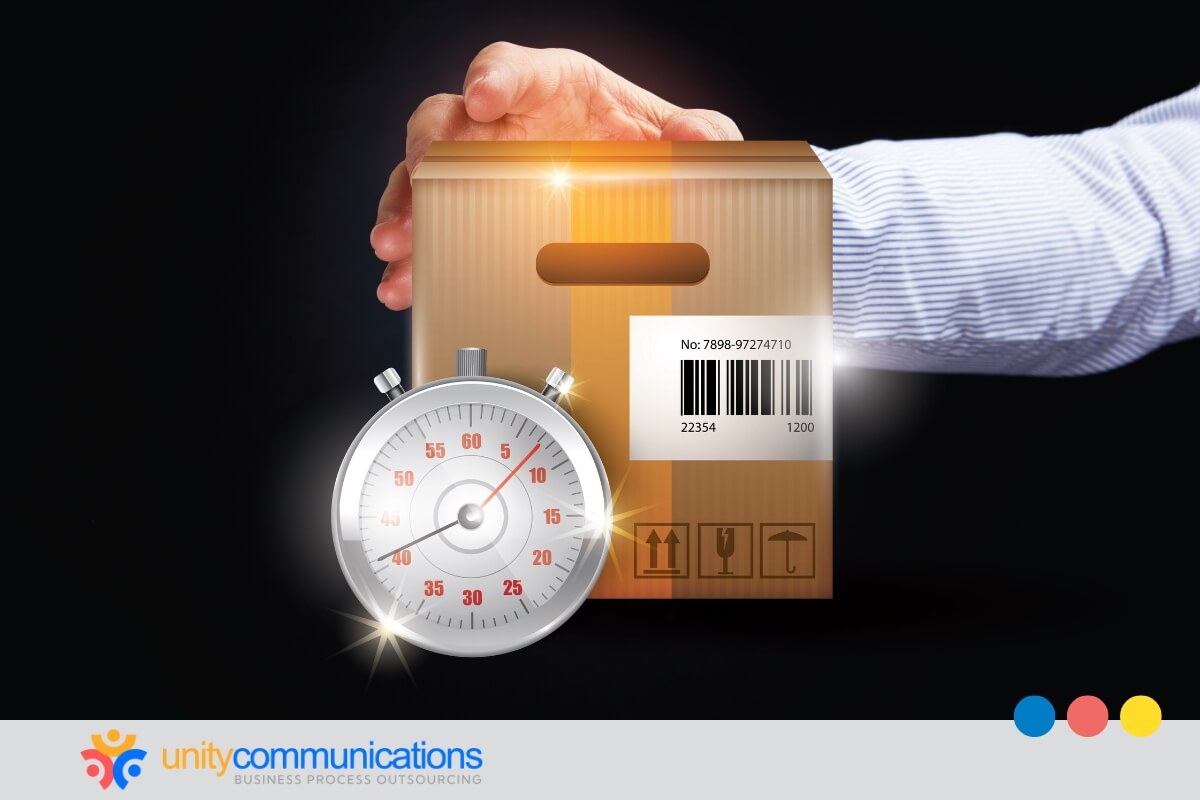Table of Contents
Outsourcing logistics through a business process outsourcing (BPO) partner can help save costs and build efficient, scalable delivery operations. As supply chains grow complex, third-party logistics (3PL) providers are crucial in meeting customer expectations.
However, performance tracking in logistics outsourcing is essential to gaining complete visibility, spotting efficiencies, and strengthening 3PL accountability.
This article discusses the top ten key performance indicators (KPIs) for measuring and optimizing your BPO strategy. Determine whether it delivers on service agreements, drives continuous improvement, and enhances customer satisfaction. Read below to learn more!
Essential KPIs for outsourced logistics success

How do you measure and reinforce accountability in third-party partnerships? Performance tracking in logistics outsourcing reveals whether your provider delivers real results.
Below are ten essential KPIs to monitor your BPO vendor’s impact on operations, cost, and customer satisfaction.
1. On-time delivery rate
This KPI tracks how often shipments arrive on or before their promised delivery date. It indicates a 3PL provider’s reliability and overall logistics performance. Even minor delays can disrupt downstream processes and damage your brand’s reputation. According to a survey, 14% of consumers will stop shopping with a retailer after receiving a single late delivery.
Consistently monitoring on-time delivery rates can identify patterns, highlight underperforming carriers or routes, and hold your BPO partner accountable.
2. Order accuracy
Order accuracy reflects whether customers receive the correct items in the right quantities, without damage or discrepancies. Mistakes lead to returns, increased service costs, and negative customer experiences.
Because it directly influences customer satisfaction and operational efficiency, order accuracy is a core focus of performance tracking in logistics outsourcing. A consistently high accuracy rate signals that your fulfillment workflows, warehouse management, and inventory controls are aligned and that your 3PL partner executes with precision.
3. Inventory turnover ratio
This KPI tells you how often inventory is sold and replenished within a given timeframe. A high turnover rate typically means your inventory strategy aligns with demand, helping reduce storage costs and boost cash flow.
Meanwhile, a low turnover rate could indicate overstocking, sluggish demand, or inefficiencies in restocking. Tracking this helps maintain the right balance between product availability and operational efficiency.
4. Dock-to-stock time
Dock-to-stock time measures how quickly incoming goods are received, processed, and made available in inventory. Long dock-to-stock times slow down fulfillment and create unnecessary holding costs.
Monitoring this KPI can identify delays in receiving processes or system handoffs between your supplier, 3PL, and warehouse. It’s beneficial for high-volume businesses where speed and shelf availability are essential.
5. Freight cost per unit
This metric breaks down your total transportation costs by unit or order, allowing you to assess how efficiently your 3PL manages shipping.
Tracking freight cost per unit helps you make informed decisions about carrier selection, shipment consolidation, and route optimization. It also strengthens your position during contract renegotiations with your BPO provider.
6. Perfect order rate
The perfect order rate combines several core KPIs. These include on-time delivery, accuracy, damage-free condition, and correct documentation. It’s the gold standard for overall logistics quality.
This KPI stands out because it captures multiple aspects of service excellence in a single metric. Monitoring it closely helps you identify gaps in your processes and enhance customer satisfaction and operational efficiency.
7. Return rate (and reasons)
Returns aren’t just a product quality issue; they often point to fulfillment problems. This KPI tracks the number of returns and, more importantly, why they are returned.
By breaking down return reasons (e.g., wrong item, late delivery, damaged goods), you and your 3PL provider can collaborate on targeted improvements. It’s a crucial feedback loop for continuously improving your outsourced logistics process.
8. Real-time visibility score
As a competitive differentiator, visibility determines how effectively your 3PL team provides real-time shipment updates, including location tracking and delay alerts.
High visibility means fewer surprises, faster responses, and better customer communication. It also helps your teams coordinate sales, service, and operations.
9. Customer service response time
When logistics problems occur, how fast can you resolve them? This KPI measures the average time to address support tickets, particularly those related to your 3PL’s performance.
Fast response times show that your logistics partner is operationally competent and committed to protecting your brand reputation. As part of performance tracking in logistics outsourcing, it helps you gauge how well your BPO partner supports issue resolution and reinforces your customer service standards.
10. Sustainability metrics
Sustainability KPIs evaluate your logistics provider’s environmental impact. Examples include carbon emissions per shipment, use of recycled materials, and route optimization to reduce fuel use. As customers value environmental responsibility, these metrics are central to performance tracking.
These KPIs support your environmental, social, and governance (ESG) goals. They can also lead to long-term savings and enhanced brand trust. A 3PL company that invests in green logistics is a partner prepared for the future.
Tracking these KPIs helps turn outsourced logistics into a strategic advantage. From reducing costs to improving delivery speed and strengthening your sustainability profile, they offer a clear path to performance excellence.
What BPO logistics delivers is more than people or systems. It’s the ability to scale smarter, act faster, and serve your customers better through measurable, data-driven results. Use these KPIs as your compass in optimizing 3PL partnerships.
3 KPI categories when performance tracking in logistics outsourcing
![]()
When you outsource logistics, you also delegate control. You trust an external partner to handle your products, meet delivery deadlines, and maintain your brand reputation. Performance tracking in logistics outsourcing becomes your safety net. It helps meet expectations, builds transparency, and gives you data to make strategic decisions.
KPIs usually fall into three categories: operational, financial, and customer service. Each evaluates how well your 3PL partner supports your business.
- Operational KPIs focus on logistics efficiency. Examples include on-time delivery, order accuracy, inventory turnover, and warehouse processing time. These metrics tell you how smoothly your supply chain runs daily.
- Financial KPIs assess cost-effectiveness. Freight cost per unit, cost per order, and transportation spend as a percentage of sales show whether your BPO logistics partner can control expenses without sacrificing performance.
- Customer service KPIs reflect how logistics affects the customer experience. These include delivery lead times, return rates, and perfect order rates. Tracking these shows that your partner delivers and builds satisfaction and loyalty.
These three categories provide a balanced view of your outsourced logistics performance. You can spot gaps, set priorities, and align results with your business goals.
The bottom line
Logistics BPO only becomes valuable when backed by data. Focusing on the most useful KPIs gives you the visibility and control to build strong, scalable supply chain operations through third-party partnerships.
Do you want your supply chain to be more competitive and optimized? Let’s connect to explore how an experienced 3PL provider can streamline your operations and improve customer satisfaction.



